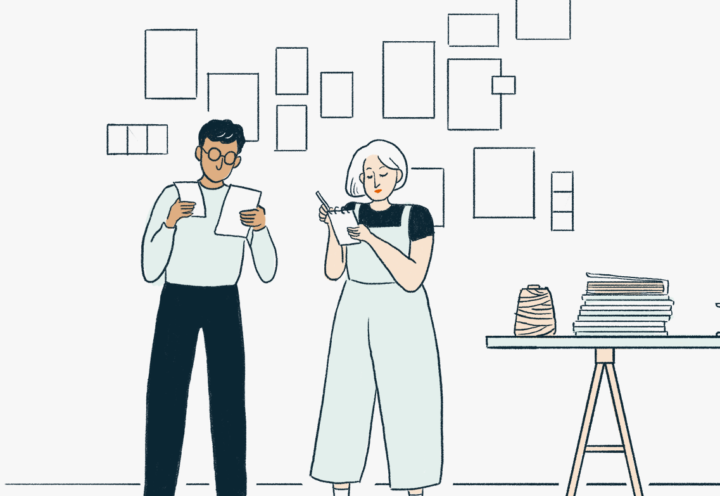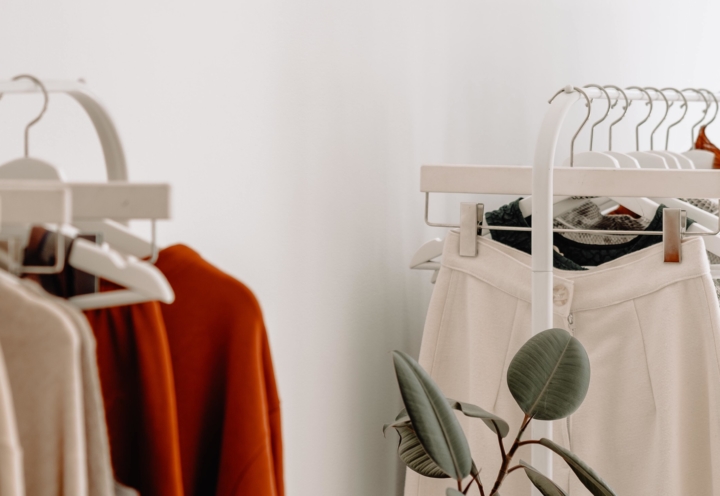Leather is one of the most fascinating and desirable materials used in the fashion industry. Known for its durability and unique properties, it has come under the spotlight for the numerous environmental and ethical issues surrounding it. Companies renowned for their sustainability both use (Veja) and refuse (Stella McCartney) it. Synthetic materials and newer innovations provide compelling alternatives, yet leather still has a captive audience and when produced as mindfully and transparently as possible, can still own the stage.
Recently, we caught up with Sundar, one of our trusted leather manufacturing partners in Tamil Nadu, India for a quick Q/A. Our co-founders visited his factory in 2019, spending time to learn about his processes and working, before establishing a trusted partnership. Read on for his experiences in the business of working with leather, his views on the sustainability issues surrounding it and his hopes for the future.
Perspectives is a SupplyCompass series that focuses on our supply chain partners operating at the intersection between innovation, efficiency and sustainability, to help shape more inclusive conversations in the fashion industry.
What is the story of your factory? How did you get into manufacturing?
After my Masters in Business Management, I worked for a leading multinational company in India and had a very good career progression. But I felt I was not really cut out for the corporate world and was keen to start a venture on my own. An opportunity came up to start a leather goods manufacturing unit in Chennai with a friend and without much planning or analysis, I just jumped in!
I come from a very conservative middle-class Tamil family. Typically, most people from my family would be in senior government jobs or in senior positions in large companies; not in business. As a first-generation entrepreneur in the family, it was pretty much learning everything from scratch.
Where do you source your leather from and how have you built relationships in the industry?
Currently, we source most of our leathers from reputed tanneries in India. We go to tanneries who are specialists in the particular leather that we need at that time. We find this is a much better arrangement compared to processing our own leather, which we were doing till a few years ago. Sometimes we import finished leathers from Italy, based on the actual requirement.
The leather industry is a pretty close-knit one and almost everyone knows each other at least by reputation, if not personally. Relationships and reputations are built slowly in the industry and over time people have come to realize that we are sticklers for quality, but we are also fair people to work with.
What are some of the biggest challenges when it comes to sourcing and working with leather?
Leather is a very natural material and even from the same origins, its nature and quality varies from season to season. So the very characteristics that make leather unique and beautiful become a challenge in the processing: No two skins or hides are absolutely alike, but in the processing their individual beauty and character have to be enhanced while still maintaining a level of consistency and uniformity. Over the years we see that even professional buyers in the industry do not appreciate and understand the value in every skin being different, beautiful and unique in its own way. This and the pressure on prices force the tanners to go in for more grain correction, heavier prints and heavier pigment overcoating of leathers.
What does a positive future for leather + sustainability look like?
Of course, the leather industry has to do a lot to clean up its act. But in recent times we have drawn a lot of flak for the wrong reasons. In my opinion, “sustainable” is probably one of the most misunderstood and misused words today. I firmly believe that responsibly made leathers are a highly sustainable resource and will continue to be so as long as people eat meat. The primary value from any of the commercially reared meat animals is the meat value itself. The rawhide or skin fetches a very small fraction of the meat value and would otherwise be thrown away, probably causing a separate health hazard. In other words, the leather industry is actually doing a scavenging job, adding value to something that would otherwise rot and putrefy. It is also worth mentioning that in countries like India, the industry generates huge employment for the backward classes.
So the leather industry needs to clean up its act, disseminate information on the value of the industry to the economy and disseminate information on the real value of leather, its durability and other advantages over synthetics etc.
What products are you proudest of making?
Over the years we have made several products that were challenging. Overcoming such technical challenges gives all of us a great sense of satisfaction. Some of them that come to mind immediately are our range of guitar bags, storage boxes where we have actually stitched through 4mm plywood, iPad cases using leather and copper sheets where we have stitched through the copper sheets.
What challenges do you face, running a factory?
Running a factory in India poses many challenges at many different levels. The ones that impact us the most are impractical statutory requirements, low productivity, continuously rising overhead costs due to inflation and the reluctance in the younger generations to join blue-collar jobs.
Every batch of leather, even if it is the 100th batch, has to be addressed on its own terms. This is the challenge and the inspiration of working with leather. You have to apply your mind and skills afresh every day to bring out the best products you can..
Are there any new leather alternatives you are excited by?
Currently, we have started working with a wood cellulose pulp-based product and another derived from the bio-enzyme processing of coconut waste. Both are vegan, eco-friendly and have their individual merits and drawbacks. We are quite optimistic about them but we have to see how they stand the test of time.
What do you wish brands or consumers could see more of?
I wish consumers could be made more aware of the effort, the skill, and the different processes and techniques involved in the manufacture of their products. And I wish manufacturers, who are the ones who add tangible value to the product, get the rewards and recognition they deserve. A better share of the consumer’s spend and a better share of the consumer’s mind-space.








